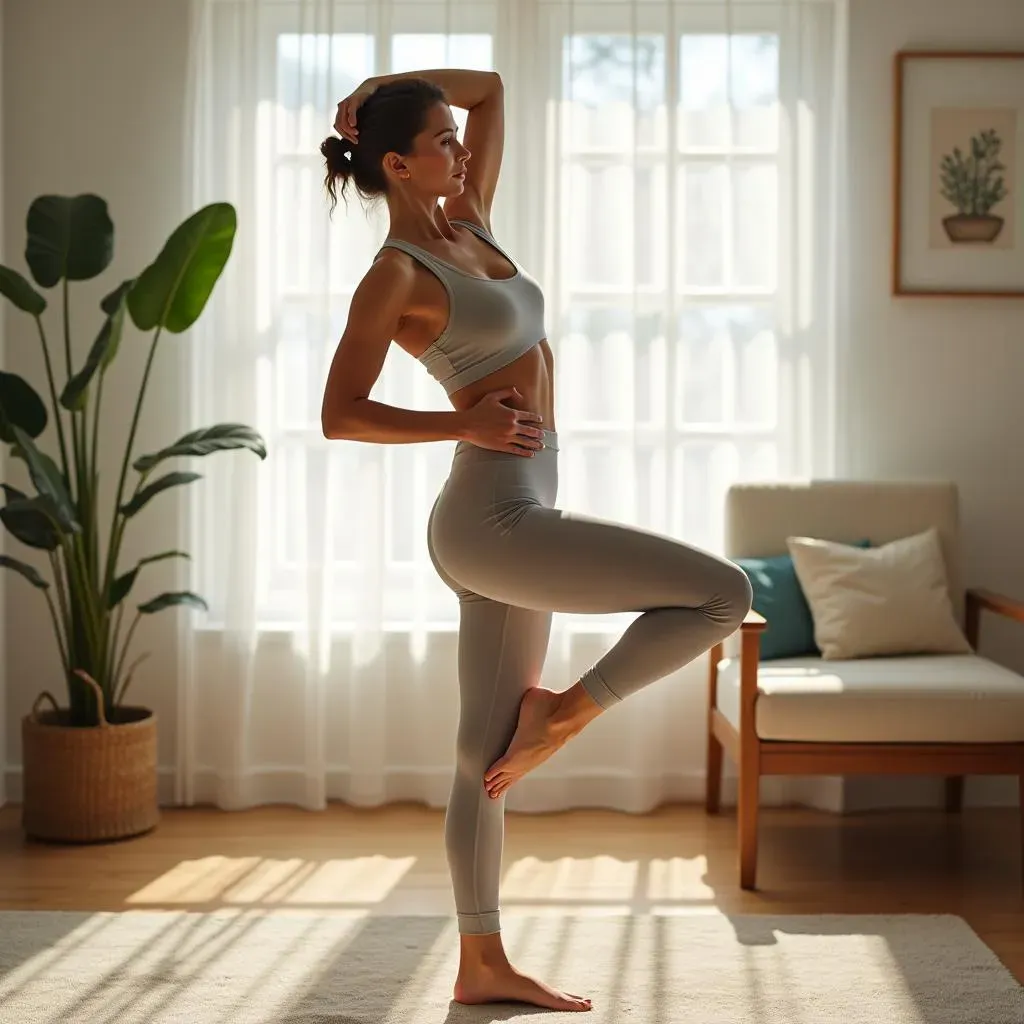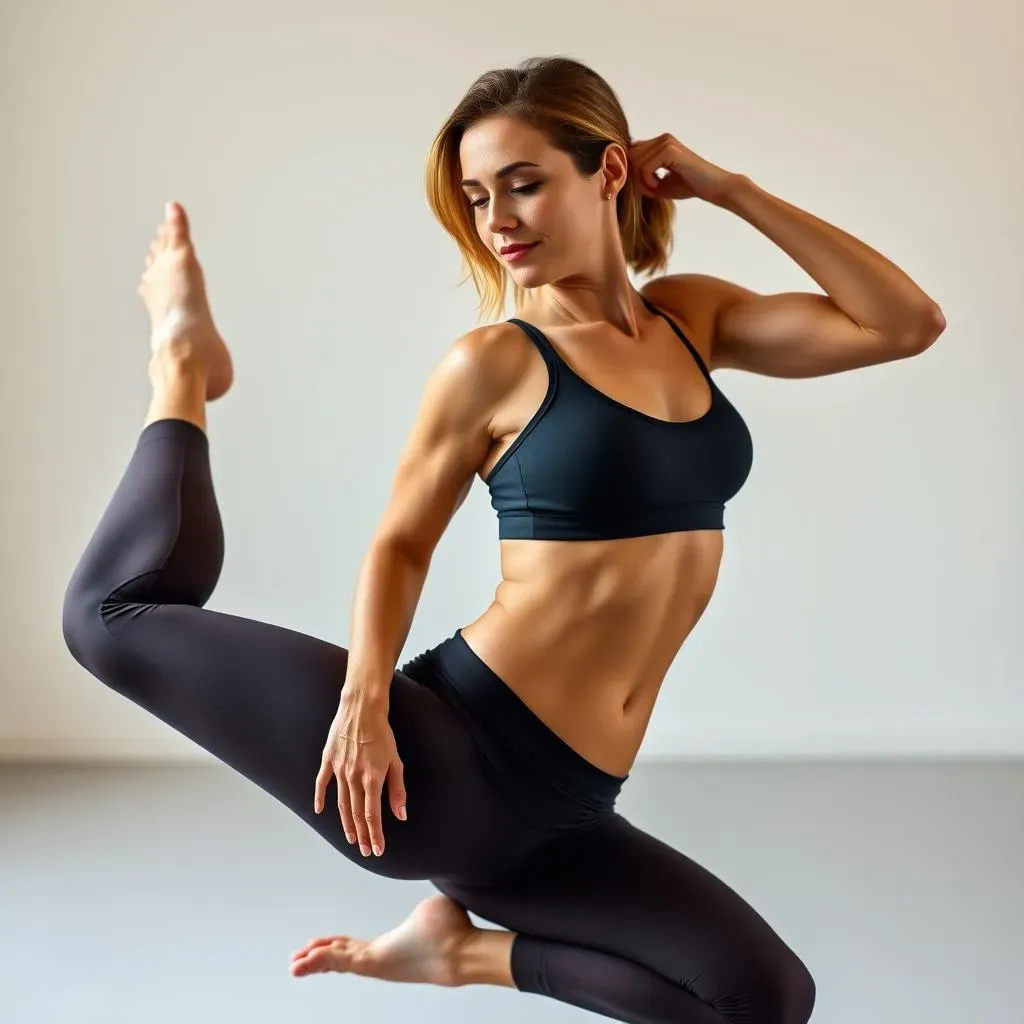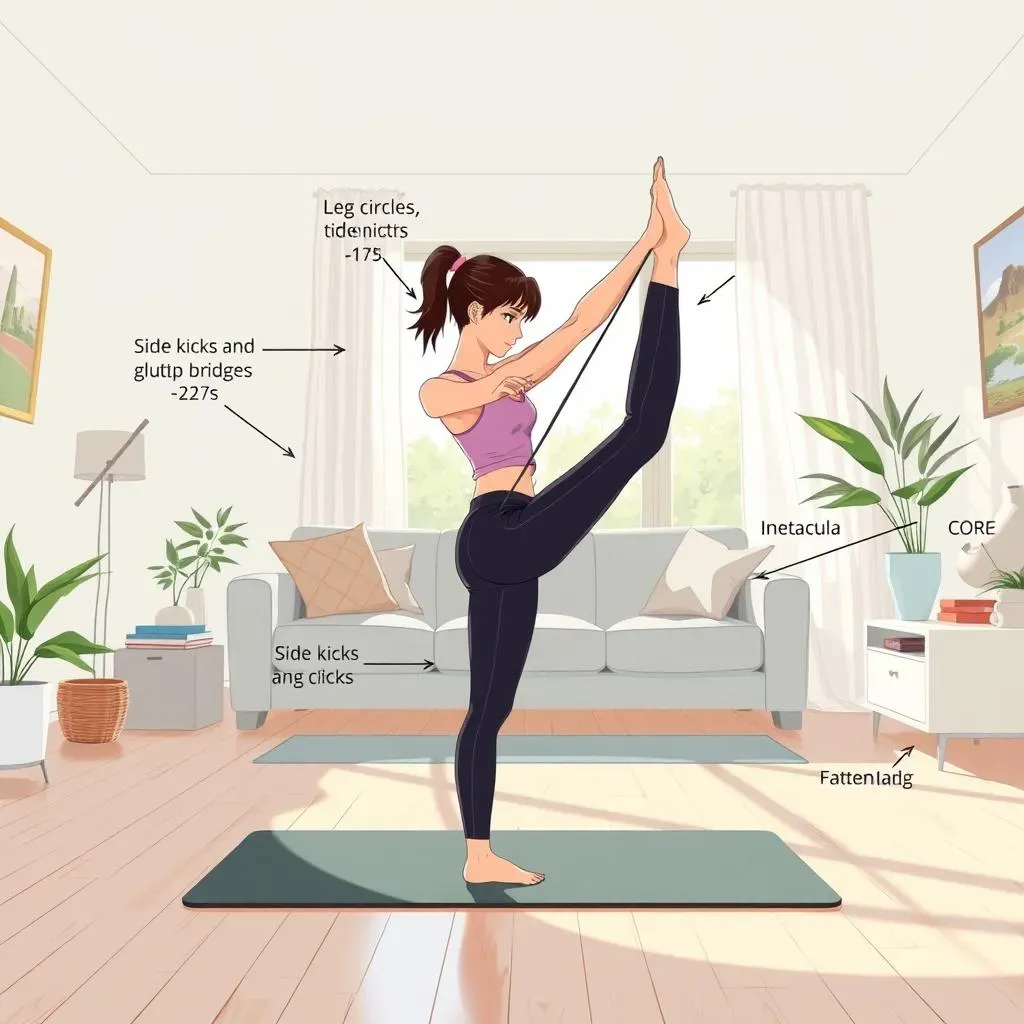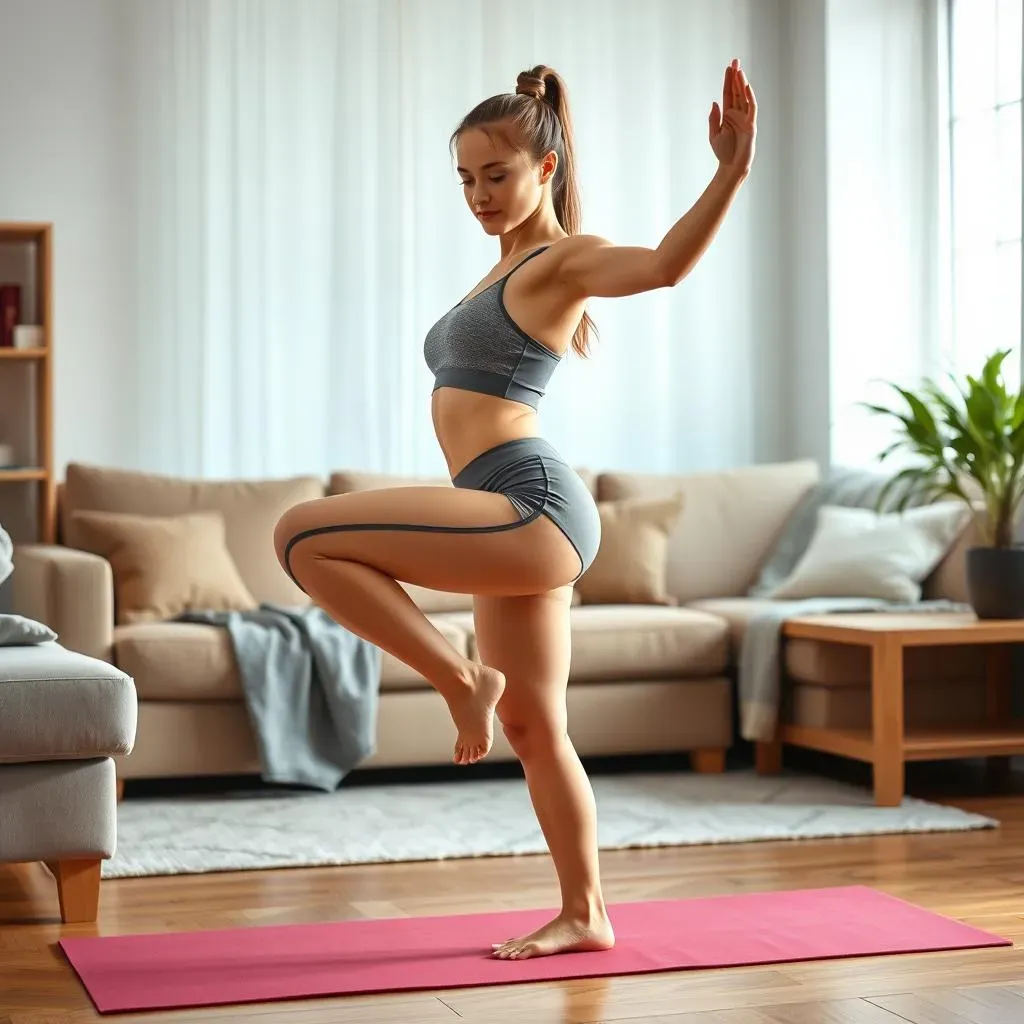Table of Contents
Tired of leg days that leave you feeling beat up? What if you could sculpt strong, lean legs without heavy weights or a crowded gym? That's where pilates leg workouts at home come in. This isn't about endless, grueling reps, it’s about smart, targeted movements that work with your body. I know what you are thinking, "Pilates? Really?" Yeah, really! Forget those outdated ideas of it being just gentle stretching. Pilates can seriously fire up your muscles, especially those in your legs. We're talking about getting deeper into those glutes, quads, and inner thighs, all from the comfort of your living room. So, ditch the excuses and get ready to discover how you can transform your legs with these awesome at-home exercises. This article will walk you through effective Pilates moves, showing you how to build strength, increase flexibility, and get that sculpted look, all without ever stepping foot in a gym. Ready to get started with pilates leg workouts at home? Let's jump in!
Pilates Leg Exercises: Your Home Studio

Pilates Leg Exercises: Your Home Studio
Getting Started: No Gym, No Problem
Okay, so you're thinking about Pilates for your legs, but maybe the whole gym scene isn't your thing. I get it. Sometimes, the best workouts happen right where you are. The beauty of Pilates is that you don't need fancy equipment to get started, and that's why it is great for your home studio. Forget the crowded classes and the intimidating machines. We're talking about using your own body weight and a bit of space to get some serious leg work done.
All you really need is a mat, a little bit of floor space, and the motivation to get moving. Think of your living room as your personal Pilates studio, where you can focus on your form and feel the burn without any distractions. You can do it with your favorite music, in your pajamas, or whenever you have a spare moment. It's all about making fitness work for you, not the other way around. So, let's get your home studio ready!
The Power of Bodyweight
Now, you might be wondering if you can really get a good leg workout without weights. The answer is a resounding yes! Pilates is all about using your own body weight to create resistance, which is surprisingly effective. It's not about lifting heavy, it's about engaging your muscles correctly. This means you're not just building strength, you're also improving your balance, flexibility, and overall body awareness.
Pilates focuses on controlled movements and precise form, which means you’re working your muscles in a way that’s both challenging and safe. You’ll be surprised by how quickly you start feeling the burn and seeing results. It’s about quality over quantity, and that's a game-changer. So, get ready to feel the power of your own body, right in your home studio.
Exercise Type | Focus | Equipment |
|---|---|---|
Pilates Leg Exercises | Strength, Flexibility, Control | Mat (optional) |
Bodyweight Training | Resistance, Muscle Engagement | None |
Home Studio Workout | Convenience, Comfort | Your living room |
Sculpting Your Legs: Pilates Moves

Sculpting Your Legs: Pilates Moves
The Magic of the Side Kick Series
Alright, let's talk about the Side Kick Series. These aren't your average leg swings, they're controlled, targeted movements that hit all the right spots. We're talking inner and outer thighs, glutes, and even your core gets a little love. Imagine you're slicing through water with your legs, slow and steady, feeling each muscle engage. It's not about how high you can kick, but about how controlled and precise you can be.
Start by lying on your side, one leg stacked on top of the other. Then, lift your top leg, keeping it straight, and kick it forward, then back, like a pendulum. The key is to keep your core engaged and your movements smooth. I remember the first time I tried these, my legs were shaking, but after a while, you start to feel the strength building. It's a game changer, trust me.
Glute Bridge Pulses: Feel the Burn
Now, let's get those glutes fired up with Glute Bridge Pulses. Forget about just lifting up and down. We're taking it a step further with pulses at the top. Lie on your back, knees bent, feet flat on the floor, and lift your hips up towards the ceiling. Once you're in that bridge position, add small pulses at the top, squeezing your glutes with each pulse.
I know it sounds simple, but these pulses can really make a difference. It's like you are waking up those muscles and telling them to get to work. You will feel the burn, but trust me, it’s a good burn. The beauty of this exercise is that it is super adaptable. You can make it easier by just focusing on the full bridges, or harder by adding a resistance band.
Exercise | Focus Area | How to Do it |
|---|---|---|
Side Kick Series | Inner and outer thighs, glutes | Lie on your side, kick leg forward and back |
Glute Bridge Pulses | Glutes | Lie on back, lift hips, pulse at top |
The Power of the Pilates Stance
Lastly, we need to talk about the Pilates stance. It’s more than just standing; it's about engaging your muscles from the ground up. Think of your feet as your foundation, and imagine you're drawing energy up through your legs and into your core. You should feel a slight tension in your inner thighs and a lengthening through your spine.
This stance isn't just for standing; it’s the starting point for many Pilates leg exercises. When you are doing your lunges or squats, maintaining this stance will help you stay stable, engage the right muscles, and get the most out of each move. It's like a secret weapon for making every exercise more effective. So, before you jump into your next Pilates move, make sure you are grounded in your Pilates stance.
Building Strength: Combining Pilates Leg Workouts at Home

Building Strength: Combining Pilates Leg Workouts at Home
Putting It All Together: Your Workout Plan
Okay, so we've covered some killer Pilates moves, but how do you actually put them into a routine? It's not about just doing random exercises, it's about creating a plan that works for you. I always tell people to start with the basics, master your form, and then build up from there. Think of it like learning a new dance, you start with the steps, and then you put them all together into a routine.
A good place to start is with 2-3 sets of 10-12 reps for each exercise. You can begin with the Side Kick Series, then transition to Glute Bridge Pulses, and work your way through the others. Take breaks when you need to, and remember that consistency is key. You don't need to spend hours working out; even 20-30 minutes a few times a week can make a huge difference. It's about making it a regular part of your day, not a chore that you dread.
Adding Intensity: Progression Tips
Once you've got the hang of the basic moves, it’s time to think about how to make them more challenging. The beauty of Pilates is that it's all about progression. There are so many ways to tweak the exercises to keep your muscles guessing. You can add resistance bands, increase the number of reps, or even slow down your movements to make them more difficult.
I always find that slowing down my movements is a fantastic way to feel the muscles work even more. It forces you to be more controlled and to really engage your core. Also, you can start incorporating some balance challenges, like doing the side kicks while balancing on one hand. The possibilities are endless, and it's all about finding what works best for you.
Workout Aspect | Description | Tips |
|---|---|---|
Workout Plan | Structured routine | 2-3 sets of 10-12 reps per exercise |
Progression | Increasing difficulty | Add resistance, reps, balance challenges |
Intensity | Challenging muscles | Slow down movements |
The Importance of Listening to Your Body
I know that we are all excited to get started and see results, but it's so important to listen to your body. Pilates is not about pushing yourself to the point of pain, it’s about working within your own limits. If something doesn’t feel right, don’t push through it. Take a break, adjust the move, or try a different exercise. It's okay to modify, and it’s okay to take rest days.
Remember, consistency is more important than intensity, especially when you are just starting. The goal is to build a sustainable routine that you enjoy and that makes you feel good. So, be kind to yourself, celebrate your progress, and always listen to what your body is telling you.
Combining Pilates with Other Activities
Pilates is awesome on its own, but it can also be a great complement to other activities. If you like running, cycling, or any other sport, adding Pilates to your routine can help you improve your performance, prevent injuries, and recover faster. It’s like giving your body a tune-up, making sure everything is aligned and working efficiently.
I often mix my Pilates workouts with some light cardio or a walk. It’s all about finding a balance that suits your lifestyle and fitness goals. Pilates is not meant to be the only thing you do, but it can be a powerful tool in your fitness arsenal. It’s about finding what makes you feel strong, balanced, and happy.
- Listen to your body, rest when needed
- Mix Pilates with other activities for a well-rounded routine
- Celebrate progress and be kind to yourself
